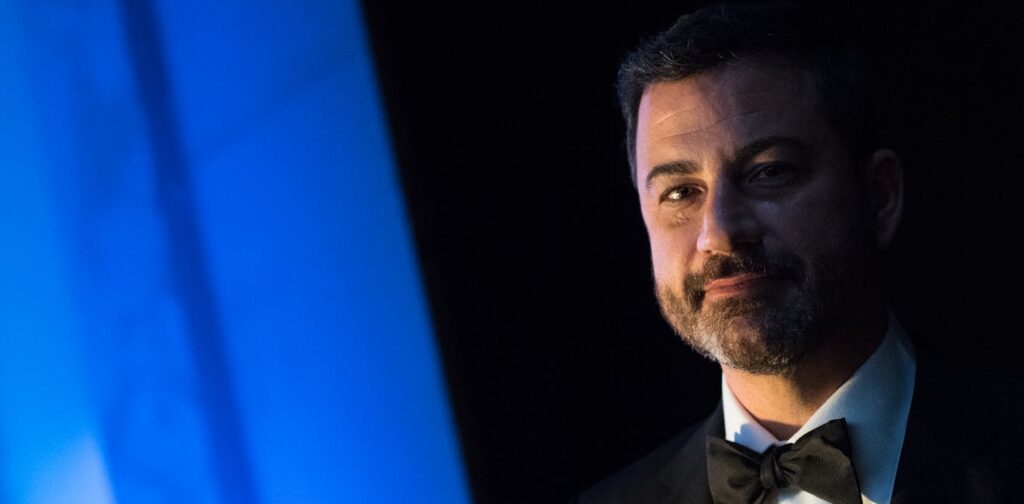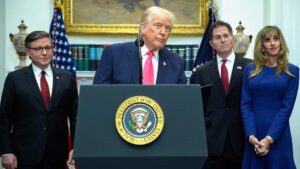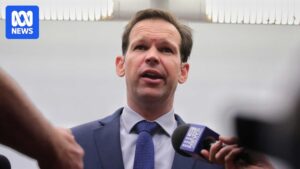
“Is there any way we can screw him?” asked President Richard M. Nixon. “We’ve been trying to,” an aide replied, referencing the White House’s efforts to remove an ABC talk show host from the airwaves. This host, whose critiques of the administration had landed him on Nixon’s enemies list, was none other than Dick Cavett.
Over 50 years ago, Nixon and his team sought to use the full weight of the federal government, including calls to network executives, Federal Communications Commission complaints, IRS audits, and FBI investigations, to silence “The Dick Cavett Show.” Cavett, embodying the liberalism Nixon despised, had drawn the president’s ire by featuring anti-war activists like John Kerry and Jane Fonda, along with left-wing radicals such as Stokely Carmichael.
Nixon ultimately failed in his attempt to silence Cavett. ABC executives were committed to independent media, and the broadcasting industry as a whole had garnered the attention and trust of an enormous audience, insulating them from political pressure.
Trump’s Influence on Late-Night TV
Fast forward to President Donald Trump’s second term, where he has openly expressed his desire to rid the nation’s televisions of his critics, and has made significant headway. In July 2025, CBS announced the cancellation of Stephen Colbert’s late-night show. While the network maintained this was “purely a financial decision” based on ratings, it followed Colbert mocking both the president and the network.
“I hear Kimmel is next,” Trump remarked shortly after. Indeed, ABC briefly suspended Jimmy Kimmel on September 17 over comments he made regarding the response to the murder of right-wing activist Charlie Kirk. The suspension was lifted five days later after it sparked widespread backlash and ignited free speech debates in the U.S.
But why has Trump been able to shake up late-night TV in ways Nixon never could? The network era, when CBS, NBC, and ABC dominated television, is often seen as a golden age of independent broadcasting and free expression. However, as political historians of media reveal, TV has always been a battleground of politics, business interests, and broadcasting ideals.
Television’s Decline
Direct pressure from the White House was the immediate catalyst for ABC’s decision to briefly suspend Kimmel. Brendan Carr, the chair of the FCC, threatened ABC and its affiliates while speaking on the podcast of right-wing commentator Benny Johnson.
“These companies can find ways to change conduct to take action on Kimmel,” he said, “or, you know, there’s going to be additional work for the FCC ahead.”
Nexstar and Sinclair, which own dozens of ABC affiliates, announced they would pull the show, forcing ABC to act. The fading place of network television in the American media ecosystem likely made the decision easier. When Nixon was trying to nix “The Dick Cavett Show,” the program averaged 5 million viewers a night, while “The Tonight Show Starring Johnny Carson” regularly pulled in 11 million viewers.
Yet even Cavett’s relatively smaller audience is more than double what Kimmel and his late-night colleagues can count on today. The rise of cable loosened the networks’ chokehold on TV news and entertainment in the late 20th century. The internet, followed by the advent of podcasts, streaming, and social media, accelerated this trend. By the 2010s, more viewers were watching clips of late-night talk shows on their phones and computers than on television.
Today, over 40% of people under 30 say they don’t watch broadcast or cable TV.
Kimmel has over 20 million subscribers on YouTube and millions more on social media, but ABC has struggled to monetize this following. In short, late night is no longer the TV crown jewel it once was, making it easier for executives to cut the cord on a Kimmel or a Colbert.
Deregulation and Media Consolidation
Broadcasting has always been a business swayed by the bottom line. In Cavett’s day, network decision-makers were broadcasting executives invested in the ideals of independent media. Leonard Goldenson, the president of ABC whom Nixon’s aides hounded, had created the network from scratch. Over at CBS, founder William S. Paley had spent decades building the network’s brand and reputation with similar beliefs. They wanted to shield the respectability of their networks, making them more resolute when confronted with political attacks.
Today, decisions about ABC and CBS are made by executives at the megacorporations that own them. Decades of deregulation, particularly the Telecommunications Act of 1996, spurred a wave of media mergers and consolidation. This has allowed broadcasting to be dominated by a handful of massive conglomerates owning networks, studios, cable channels, and internet services.
These media giants need government approval to expand their empires, such as the $8 billion merger that made Paramount Skydance the owner of CBS in summer 2025.
Disney, which owns ABC, also has major deals pending that require government approval. If the ultimate goal is ever-increasing profits for shareholders, canceling a late-night show may seem like a small price to pay, especially if a program threatens government approval on a massive deal.
Charging ‘Liberal Bias’
The decline of ratings and media consolidation has left television more vulnerable to political intimidation. Trump is not the first conservative to use television networks as a political punching bag. His strategy of accusing national broadcasters of “liberal media bias” dates back to right-wing media activists in the 1940s who argued that mainstream media shut out conservative ideas and voices.
Nixon, convinced the television industry was against him, brought these tactics to the White House. Publicly, he relied on Vice President Spiro Agnew to criticize the networks as part of a hostile liberal “unelected elite” with “vast power.” Privately, Nixon used the presidency to harass and intimidate broadcasting reporters, directors, and executives. These tactics largely failed, but in Nixon’s wake, media activists like former Fox News executive Roger Ailes and radio host Rush Limbaugh popularized the idea of “liberal media bias” within the conservative movement.
Today, Trump’s charges of “liberal bias” or “fake news” galvanize his supporters and make media executives sweat because they are a key part of modern right-wing identity. However, Trump’s approach is unprecedented. By threatening broadcasting licenses, instigating investigations, and filing lawsuits while declaring mainstream media “the enemy of the people,” Trump has turned the dial up to 11.
The implications of this are profound. As media landscapes continue to evolve and political pressures mount, the future of independent broadcasting remains uncertain. The ability of networks to resist political interference will likely depend on their capacity to adapt to new media realities and maintain public trust.





